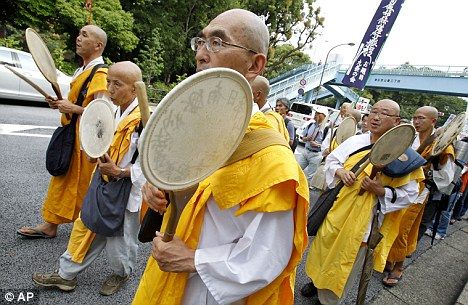
© APConcerns: Buddhist monks take part in an anti-nuclear march in Tokyo three months after a devastating earthquake and tsunami triggered one of the world's worst atomic disasters
Protesters in Tokyo have staged mass demonstrations against the use of atomic power just three months after a powerful earthquake and tsunami triggered one of the world's worst nuclear disasters.
Crowds of people banging drums and shouting anti-nuclear slogans poured through the streets of the capital and descended on the head offices of Tokyo Electric Power Co, which operates the stricken Fukushima Dai-ichi nuclear plant.
The magnitude-9 earthquake which struck off Japan's north-east coast on March 11 caused a huge tsunami that knocked out power and cooling systems at Fukushima.
The huge wave set off explosions, fires and large radiation leaks at the facility, around 140 miles north-east of Tokyo.
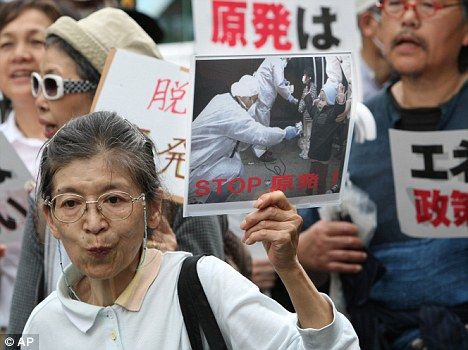
© APBacklash: A woman holds up a sign saying 'stop nuclear plants'. Official reports have revealed the levels of radiation leakage are worse than thought
Official reports released earlier this week said the damage and leakage was worse than previously thought, with nuclear fuel in three reactors likely to be melting through the main cores and containment vessels.
The reports also said radiation that leaked into the air amounted to about one sixth of the Chernobyl nuclear disaster in 1986.
Takeshi Terada, 32, a shipping worker who took part in the protests with 10 friends, said: 'Since the earthquake, I've realised that nuclear power is just too dangerous for use.'
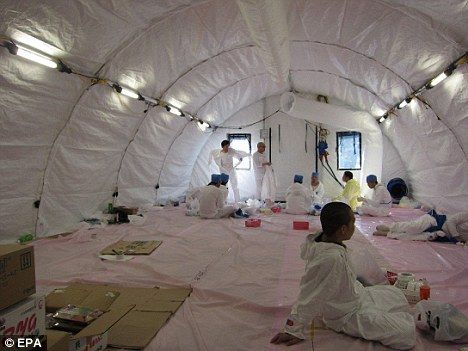
© EPAScramble: Workers rest in a special enclosure at the Fukushima Dai-ichi nuclear plant as they battle to get radiation leaks under control
Hundreds of plant workers are still scrambling to bring the crippled Fukushima reactors to a 'cold shutdown' by early next year and end the crisis.
Some nuclear plants across the country have been shut down in the wake of the disaster, leading to fears Japan may not have enough electricity for the peak summer months.
Three months after the twin disasters, which killed around 23,000 people, 90,000 are still living in temporary shelters such as school gymns and community centers.
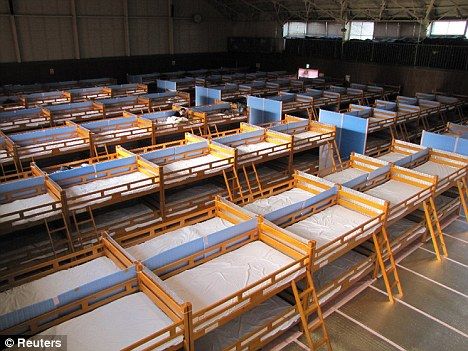
© ReutersCrammed in: Bunk beds for workers in a gym hall at the Fukushima plant. Two workers were last week found to have been exposed to more than double levels of radiation
Some families have been moved into temporary housing, but supplies are short and sufficient housing is not expected to be completed for several more months.
All along the coast, a massive clean-up operation continues as cranes and dump trucks haul away the wreckage of hundreds of thousands of buildings destroyed or damaged by the tsunami.
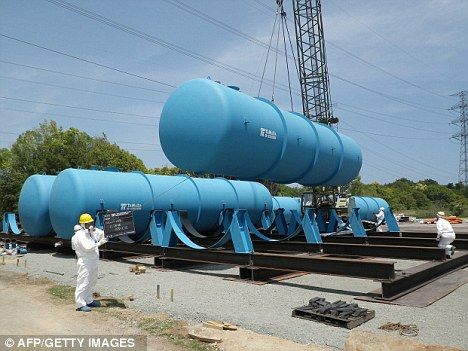
© AFP/Getty ImagesContainment: Workers install massive tanks to store radioactive contamination from the stricken plant
Embattled Japanese Prime Minister Naoto Kan is set to visit a tsunami-damaged region in northern Iwate prefecture today.
Mr Kan has been under fire for his handling of the disasters and the country's recovery plans.
He survived a no-confidence vote earlier this month, in part by promising to step down once the country's recovery takes hold.
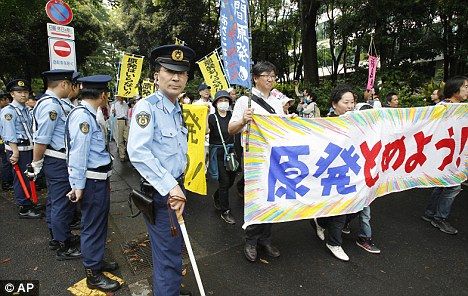
© APMarch: Police officers monitor the protest as it marched on the headquarters of TEPCO - which operates the Fukushima plant









35% spike? link: [Link]